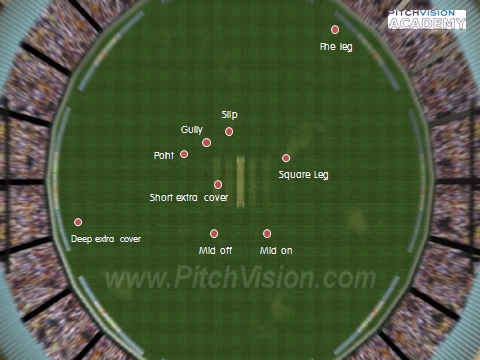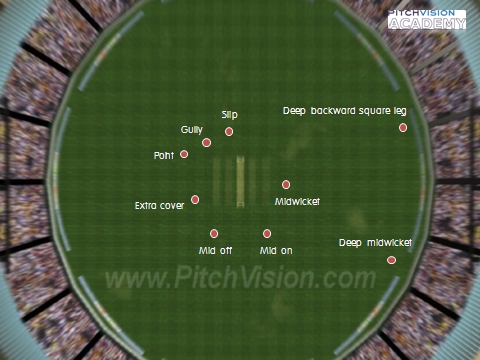|
During a match in the 2005 Ashes, the 5th wicket had just fallen and Adam Gilchrist strolled to the crease. The game was in the balance at 208-5. Orthodoxy dictated a couple of slips and a fine leg the only boundary runner.
But Vaughan directed a fielder to deep point.
Critics were up in arms. They accused the skipper of setting a field for bad bowling; a mistake a schoolboy captain would think twice about.
In fact, it was a stroke of brilliance that you can apply to your matches too.
Vaughan had seen Gilchrist play many times before. He knew that the Australian keeper liked to deal in boundaries, especially early in his innings.
By setting a man on the rope he was cutting off the oxygen of confidence that a boundary brings. Suddenly a magnificent four was a strolled single. Gilchrist was strangled.
Now think about the games you play in. Imagine a player with a reputation for big hitting has walked to the crease. He’s looking to dominate you from the beginning with a big shot, and you know what it might be from previous experience.
Wouldn’t it make perfect sense to cut that shot off before he has time to play it?
His eye won’t be in and straight away he has to find a new way to get that coveted boundary. He has to use shots he is weaker in an is more likely to make a mistake.
Attacking boundary fields
So what might a field look like?
Let’s pick a couple of examples. Let’s assume the game situation is one where you need to take wickets but can’t attack all out. The bowler is a medium pace swing bowler and the batsman is right handed.
The cover driver
Many club and school batsmen are looking to cover drive to get the big booming boundary. They tend to lean their head over to the off side and are looking for that wide half volley to put away.
Knowing this allows you to do three specific things:
- Place your boundary fielder at deep extra cover to save the four.
- Place a close catcher at short extra as a ‘shot stopper’ like a soccer goalkeeper (he also prevents the tip-and-run tactic).
- Have a fielder square on the leg side to cut off the leg side shot played around the front pad and another at fine leg to save the boundary for the same reason.
The four positions effectively cut off both boundaries and easy singles. So the field would look something like this:

The slogger
The ‘village blacksmith’ type needs a different approach, but the theory is the same; to cut off his big shot:
- Place your boundary runner on the leg side boundary at deep midwicket/cow corner.
- Move fine leg squarer to deep backward square leg.
- Place gully a little deeper and point a little more backwards. If this batter mistimes a swipe the ball can fly off the top edge into that area.

As the big shot target area is somewhere between square leg and midwicket, you have turned his four into a one or two. Make sure the cow corner fielder has good hands as the batsman is likely to try and clear the rope.
On the surface these moves may seem defensive, trying to protect the bowler’s figures. Really it’s about frustrating an effective batsman before he can get settled. Setting a ‘bad’ field is a brilliantly disguised way of doing it.
image credit: qmechanic
Discuss this article with other subscribers
|

.jpg)




.jpg)


